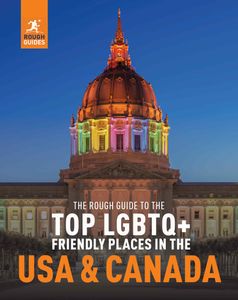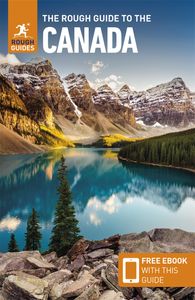Field’s railway and the Spiral Tunnels
Regular passenger services no longer come through Field, but the railway is still one of the park’s “sights”, and among the first things you see whether you enter from east or west. That it came this way at all was the result of desperate political and economic horse trading. The Canadian Pacific’s chief surveyor, Sandford Fleming, wrote of his journey over the proposed Kicking Horse Pass route in 1883: “I do not think I can forget that terrible walk; it was the greatest trial I ever experienced.” Like many in the company he was convinced the railway should take the much lower and more amenable Yellowhead route to the north.
The railway was as much a political as a transportation tool, designed to unite the country and encourage settlement. A northerly route would have ignored great tracts of valuable prairie near the US border (around Calgary), and allowed much of the area and its resources to slip into the hands of the US. So, against all engineering advice, the railway was cajoled into taking the Kicking Horse route, and thus obliged to negotiate four-percent grades, the greatest of any commercial railway of the time.
The result was the famed Spiral Tunnels, two vast figure-of-eight galleries within the mountains; from a popular viewpoint about 7km east of Field on Hwy-1, you can watch the front of goods trains emerge from the tunnels before the rear wagons have even entered. More notorious was Big Hill, where the line drops 330m in just 6km from Wapta Lake to the flats east of Field. The first train to attempt the descent plunged into the canyon, killing three railway workers. Runaways became so common that four blasts on a whistle became the standard warning for trains careering out of control (the wreck of an engine can still be seen near the main Kicking Horse Park campground). Lady Agnes Macdonald, wife of the Canadian prime minister, rode down Big Hill on the cowcatcher (a metal frame in front of the locomotive to scoop animals off the track) in 1886, remarking that it presented a “delightful opportunity for a new sensation”. She’d already travelled around 1000km on her unusual perch; her husband, with whom she was sharing the symbolic trans-Canada journey to commemorate the opening of the railway, managed just 40km on the cowcatcher. Trains climbing the hill required four locomotives to pull fifteen coaches; the ascent took over an hour, and exploding boilers (and resulting deaths) were frequent.
Hikes in Yoho National Park
Hiking in Yoho is magnificent. If you have time for just a single day walk, make it the Iceline–Whaleback–Twin Falls Trail, rated among the top five day-hikes in the Rockies. If you’re really short on time, get a quick taste of the park on the Trans-Canada side roads to Emerald Lake and the Yoho Valley.
Lake O’Hara
The Lake O’Hara region divides into five basic zones, each of which deserves a full day of exploration: Lake Oesa, the Opabin Plateau (this area and others are often closed to protect their grizzlies), Lake McArthur, the Odaray Plateau and the Duchesnay Basin.
If you only have time for one day-hike, the classic trails are the Wiwaxy Gap (12km one way; 495m ascent), or the Opabin Plateau Trail (3.2km one way; 250m ascent; 2hr), from the Lake O’Hara Lodge to Opabin Lake. Despite the latter’s brevity, you could spend hours wandering the plateau’s tiny lakes and alpine meadows on the secondary trails that crisscross the area. Most people return to Lake O’Hara via the East Circuit Trail, but a still more exhilarating hike – and a good day’s outing – is to walk the Yukness Ledge, a section of the Alpine Circuit that cuts up from the East Circuit just 400m after leaving Opabin Lake. This spectacular high-level route leads to the beautiful Lake Oesa, from where it’s just 3.2km down to Lake O’Hara. Oesa is one of many beautiful lakes in the region, and the Lake Oesa Trail (3.2km one way; 240m ascent; 2hr) from Lake O’Hara is the single most walked path in the Lake O’Hara area. Close behind comes the Lake McArthur Trail (3.5km one way; 310m ascent; 2hr), leading to the largest and most photographed of the lakes in the area. The Odaray Plateau Trail (2.6km one way; 280m ascent; 2hr) is another highly rated, but rather over-popular hike.
The longest and least-walked path is the Linda Lake–Cathedral Basin trip, past several lakes to a great viewpoint at Cathedral Platform Prospect (7.4km one way; 305m ascent; 3hr). The most challenging hike is the high-level Alpine Circuit (11.8km), taking in Oesa, Opabin and Schaffer lakes. This is straightforward in fine weather and when all the snow has melted; very fit and experienced walkers should have little trouble, though there’s considerable exposure and some scrambling. At other times it’s best left to climbers, or left alone completely.
Yoho Valley
Most trails in the Yoho Valley area start from a car park at the end of the Yoho Valley Road by the Takakkaw Falls Campground and the Whiskey Jack Hostel. The 14km road here leaves the Trans-Canada about 5km east of Field and is a narrow, switchbacking, summer-only affair that’s unsuitable for trailers and RVs.
The shortest hikes in the valley all strike out to waterfalls. Takakkaw Falls lie an easy twenty-minute hike away and drop some 254m, making them among the most spectacular road-accessible falls in the mountains. Other, less busy, options are Point Lace Falls (1.9km one way; minimum ascent; 90min return) or Laughing Falls (3.8km one way; 60m gain; 1hr).
Another shortish, extremely popular walk from the same car park is the Yoho Pass (10.9km one way; 310m ascent, 510m height loss; 3hr), which links to Emerald Lake and its eponymous lodge (though you’ll need transport arranged at the lake). A southern branch from this hike will take you over the Burgess Pass and down into Field, another manageable day-trip with fine overviews of the entire area.
The most tramped path in the Yoho Valley is the Twin Falls Trail (8.5km one way; 290m ascent; 3hr) from the Takakkaw Falls car park. This easy six-hour return journey passes the Laughing Falls and has the reward of the Twin Falls cataract at the end, plus fine scenery and other, lesser waterfalls en route. Stronger walkers could continue over the highly recommended Whaleback Trail (4.5km one way; 1hr 30min) for some incredible views of the glaciers at the valley head. A complete circuit returning to Takakkaw Falls with the Whaleback is 20.1km.
If you’re allowing yourself just one big walk in Yoho it’s a hard choice between the Takakkaw Falls–Twin Falls–Whaleback Trail above or the Iceline–Little Yoho Valley–(Whaleback)–Twin Falls combination. The Iceline (695m vertical gain) starts close to the Takakkaw Falls car park, climbing west through a large avalanche path onto a level bench with jaw-dropping views of the Emerald Glacier above and the Daly Glacier across the valley. It contours above Lake Celeste (a trail drops to this lake, making a shorter 17km circuit in all back to the car park) and then drops to the Little Yoho Valley and back to Takakkaw Falls for a 19.8km circuit. If you’re very fit (or can camp overnight to break the trip), tagging on the Whaleback before returning to Takakkaw Falls makes a sensational 27km walk with 1000m of ascent. Most choose to do this as a backcountry hiking option (there are four backcountry campgrounds up here) – though the Iceline–Little Yoho walk coupled with the trek west to the Kiwetinok Pass (30km; 1070m) is also on many people’s lists of top five day/overnight Rocky Mountain hikes. Juggling further with the permutations brings the Whaleback into this last combination to make one of the best backcountry hiking routes in the Rockies: Iceline–Little Yoho Valley–Kiwetinok Pass–Whaleback (35.5km; 1375m ascent), a route up there with the Rockwall Trail in Kootenay, Skyline in Jasper and Berg Lake in Mount Robson Provincial Park.

















